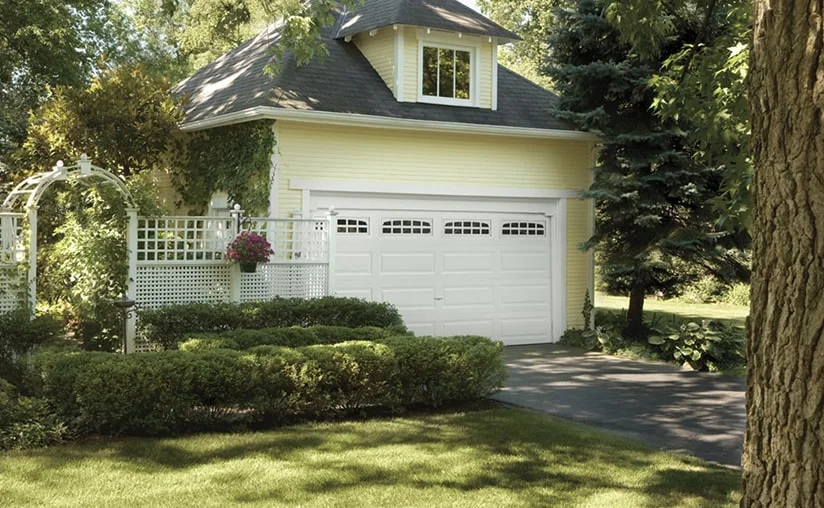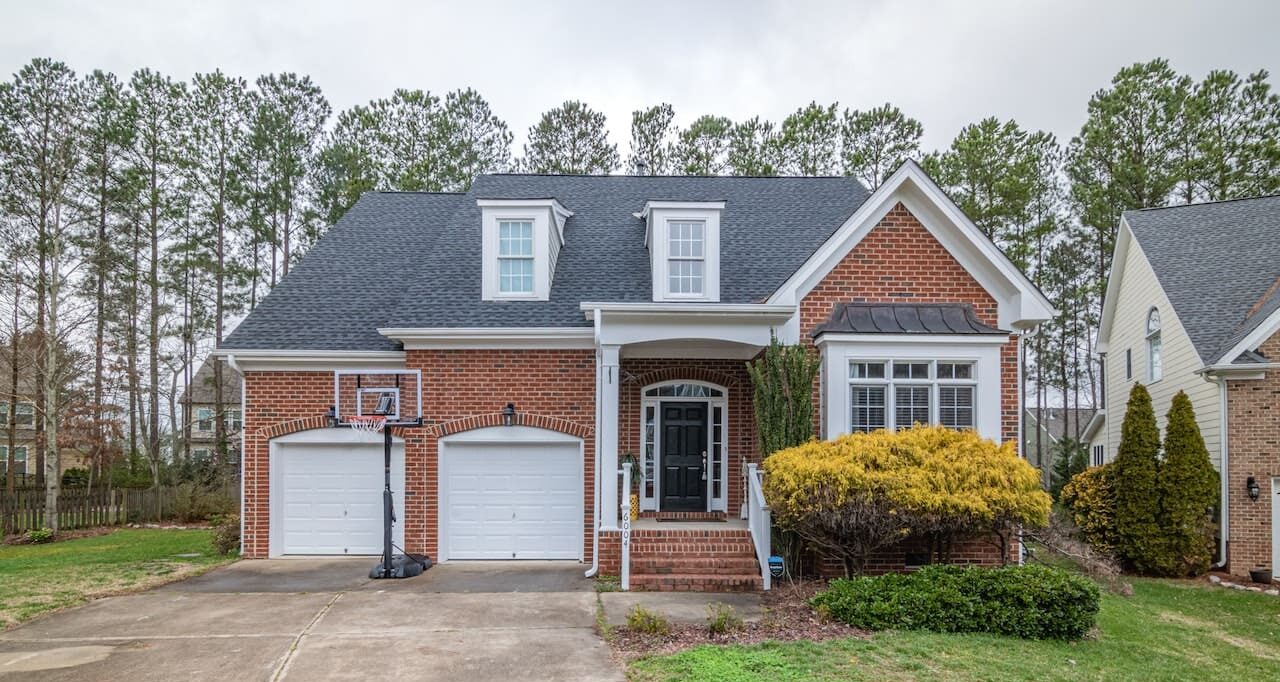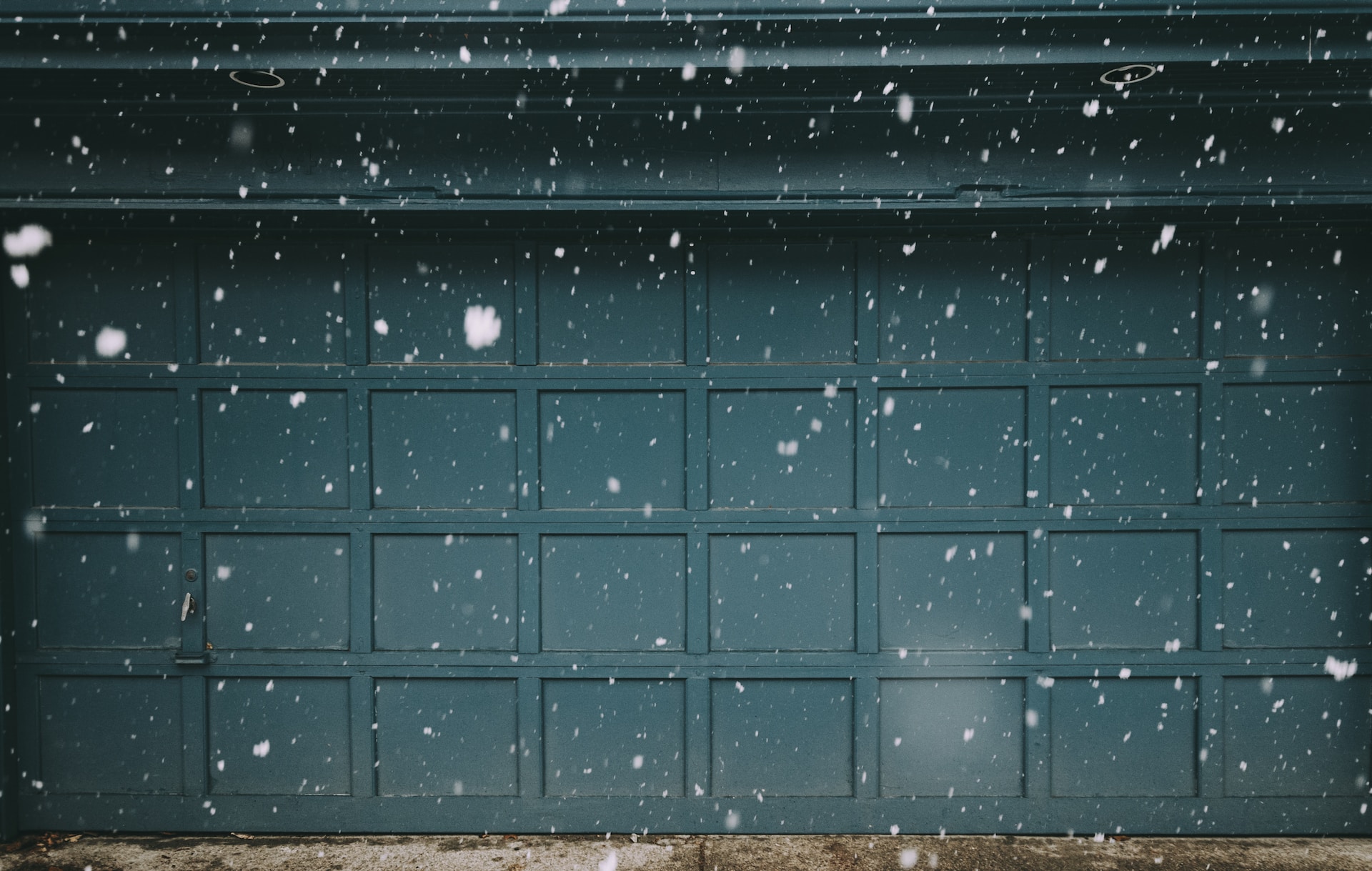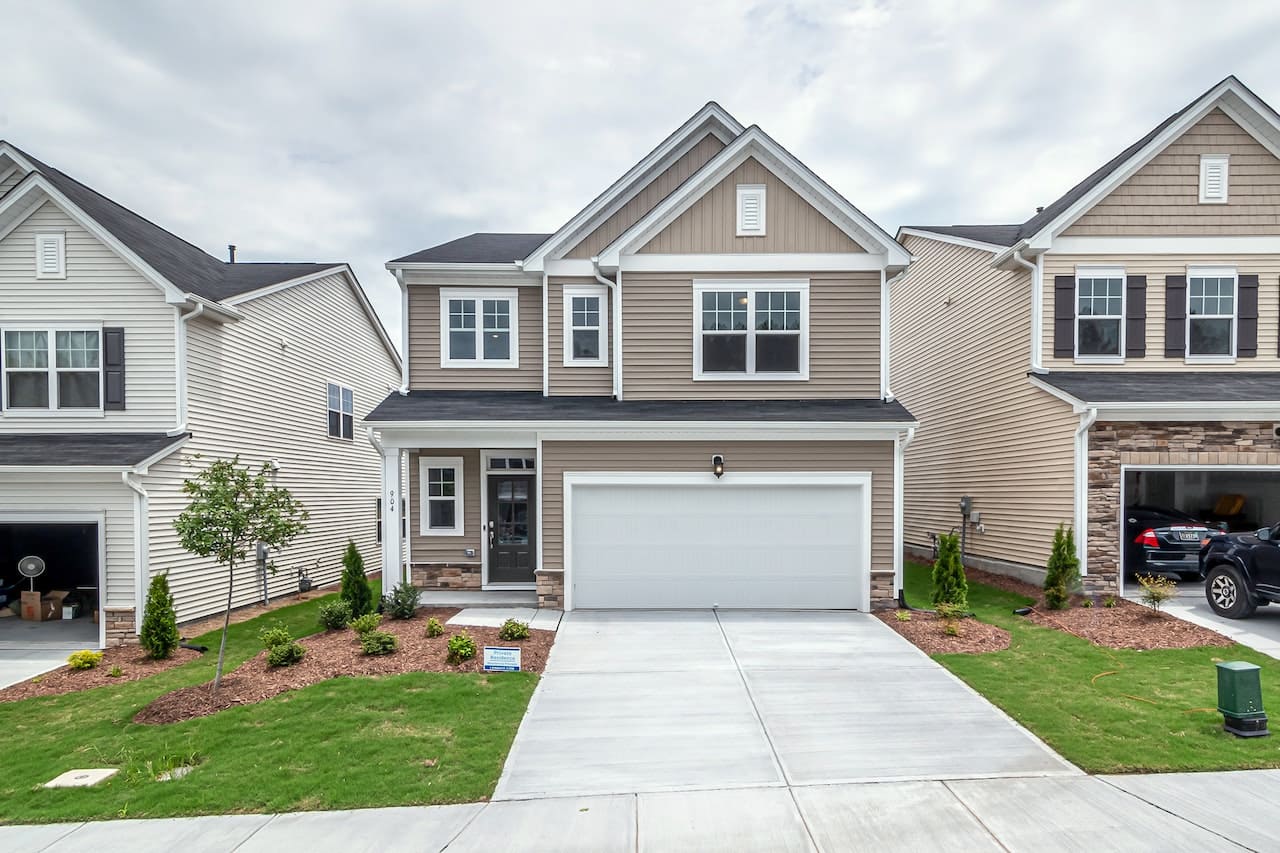Month: October 2023
Modern Steel
Troubleshooting Garage Door Noises: A Comprehensive Guide
Garage doors are meant to provide security and convenience, but if yours is making more noise than it should, it can be both annoying and concerning. A noisy garage door can disrupt your peace and potentially indicate underlying issues. In this comprehensive guide, we will explore how to fix garage door noise, providing you with step-by-step solutions to quiet those irritating sounds.
Common Garage Door Noises
Before we delve into the solutions, let’s understand the common types of noises your garage door might make. Recognizing these sounds is the first step in effective troubleshooting:
- Screeching: The high-pitched screech when your garage door is in motion can be grating. This sound often indicates a lack of proper lubrication. It’s essential to keep your garage door well-oiled to minimize friction and reduce this noise.
- Creaking: Creaking noises are a bit more subtle but equally annoying. These sounds can be due to worn-out hinges or rollers. Regular maintenance and lubrication can help alleviate this problem.
- Banging: A loud banging noise can be alarming. This usually happens when your garage door is closing, and the sudden thud can be unsettling. It’s often a sign of loose hardware or malfunctioning springs. Ensure all bolts and nuts are properly tightened and replace any damaged springs.
- Rattling: Rattling noises can be caused by loose chains or belts. If you hear this noise, it’s a sign that your garage door opener might need adjustment or replacement.
- Grinding: Grinding noises often indicate that the gear or sprocket in your garage door opener is worn out. It’s essential to address this issue promptly to prevent further damage.
Ensuring a Secure Troubleshooting Process
Before diving into the troubleshooting process, it’s crucial to ensure your safety. Disconnect the power to your garage door opener and be cautious while handling any components. Safety first!
Examining Your Garage Door System
Understanding the root cause of the noise is the first step to resolve it. Examine your garage door system thoroughly, looking for loose parts, worn-out components, or any visible damage.
Silencing Squeaky Hinges and Rollers
One of the most frequent sources of garage door noise is squeaky hinges and rollers. Lubricating these components with a high-quality garage door lubricant can significantly reduce the friction that causes the noise.
Bolts and Nuts – Your Noisy Culprits
Rattling and banging sounds often result from loose bolts and nuts in your garage door and opener. A simple tightening of these components can make a noticeable difference in noise reduction.
Addressing Spring-Related Noises
If you notice a loud twang or popping noise when your garage door is in operation, it might be related to the springs. Springs can wear out over time, and replacing them can bring quiet back to your garage.
Fixing Noisy Garage Door Openers
A noisy garage door opener can be a significant source of frustration. To address this, adjust the opener according to the manufacturer’s instructions. If the problem persists, it might be time for professional intervention.
When DIY Isn’t Enough
If you’ve tried troubleshooting and the noise still persists, it’s time to call in the professionals. An experienced garage door technician can diagnose and fix issues that might not be apparent to the untrained eye.
Conclusion
A peaceful home is a happy home, and garage door noises should never stand in the way. By following these troubleshooting tips, you can silence those irritating sounds and enjoy the tranquility you deserve. Don’t let garage door noises disrupt your daily life. Take action, and bring back the quiet!
Wireless Keypad Programming Instructions OWK-BX and OKP-BX: Easy Steps for Setting Up Your Garage Door Opener
In today’s fast-paced world, convenience is key, and one way to enhance the convenience and security of your home is by adding a wireless keypad programming to your garage door opener. This guide will walk you through the programming instructions for two popular keypad models: OWK-BX and OKP-BX, ensuring that your garage door functions smoothly and securely.
How to program a wireless keypad for garage door? Before diving into the programming details, it’s crucial to understand the specific keypad model you have. The two common models are OWK-BX and OKP-BX.
Instructions for Model OWK-BX
To program your OWK-BX keypad, please follow these steps carefully:
- Ensure your garage door opener is compatible with wireless keypads.
- Locate the “Program” button on your garage door opener unit.
- Press and release the “Program” button.
- Enter your desired PIN on the keypad.
- Press the “Enter” button.
Following the wireless keypad programming instructions will not be difficult if you do everything step by step.
Testing Your Garage Door Opener
After successfully programming your keypad, it’s crucial to test your garage door opener. Open and close the door several times to ensure it responds consistently. This test ensures that your garage door operates smoothly.
Resetting and Clearing the Keypad
To program garage door keypad, follow these steps:
- Locate the “Learn” button on the garage door opener motor unit.
- Press the “Learn” button.
- Enter a new PIN on the wireless keypad and confirm it.
Setting a Personal Identification Number (PIN) on Your Keypad
Choose a unique PIN and set it as follows: find the “Learn” button on the garage door opener motor unit and press it; enter your new PIN on the wireless keypad and confirm it.
Getting Started
How to program wireless garage door keypad? The answer to this question depends on many factors, including the model of your device. We have prepared detailed instructions that will help you if you have never done this before.
Programming a Single Garage Door Opener
If you have a single garage door opener, follow these instructions:
- Press and release the “Learn” button. The indicator light should illuminate.
- Enter your desired PIN on the wireless keypad.
- Confirm your PIN by pressing the “Enter” button on the keypad.
Test the keypad by entering your PIN and pressing the “Open” button. Your garage door should respond accordingly.
Programming Two or Three Garage Door Openers
For those with multiple garage door openers, the process is not slightly different. You need to repeat the previous step for each key in turn.
Step-by-Step Guide to Programming the Wireless Keypad
Here’s a simplified guide to programming your wireless keypad for your garage door opener:
- Press and release the “Learn” button.
- Enter your desired PIN on the wireless keypad and confirm it.
- Test the keypad by entering your PIN and pressing the “Open” button. Your garage door should respond accordingly.
Now that you’ve successfully programmed your wireless keypad, your garage door opener is ready for action.
Instructions for Model OKP-BX
Now, let’s shift our focus to the OKP-BX model and its specific programming instructions.
Programming the Keypad for One Garage Door
Programming your OKP-BX wireless keypad for a single garage door is a straightforward process:
- Press and release the “Learn” button. The indicator light should illuminate.
- Enter your preferred PIN on the wireless keypad.
- Confirm your PIN by pressing the “Enter” or “Send” button.
- Test the keypad by entering your PIN and pressing the “Open” button.
Your garage door should respond as expected.
Programming the Keypad for Multiple Garage Doors
If you have multiple garage doors, you can program the OKP-BX wireless keypad to control them all. You need to repeat the previous step for each key in turn.
Changing Your PIN
To enhance security, it’s recommended to change your PIN periodically. You need enter your current PIN on the wireless keypad and confirm your current PIN by pressing the “Enter” or “Send” button. Then you can enter your new PIN and confirm it.
Using a Temporary PIN
The OKP-BX keypad allows you to set up a temporary PIN for guests or service personnel:
- Enter your current PIN on the wireless keypad.
- Press and release the “Learn” button.
- Enter the temporary PIN you wish to use.
- Confirm the temporary PIN.
This temporary PIN provides access to your garage for a limited time, ensuring your primary PIN remains secure.
Forgot Your PIN? (Resetting the Wireless Keypad)
How to program wireless garage keypad if you ever forget your PIN? You can reset your wireless keypad:
- Press and release the “Learn” button.
- Enter a new PIN on the wireless keypad.
- Confirm the new PIN by pressing “Enter.”
Your wireless keypad is now reset, allowing you to choose a new PIN.
Changing the Battery
To ensure your wireless keypad functions smoothly, it’s crucial to replace the battery when needed. You need to locate the battery compartment on the back of the keypad and open the compartment and remove the old battery. Then you have to insert a new battery of the same type and close the compartment securely.
With a fresh battery, your wireless keypad will continue to provide reliable service. With these comprehensive instructions, you can confidently program and maintain your wireless keypad.
Programming Your Garage Door Opener
Sometimes you may have problems with this step, so we are here to give some simple tips.
Troubleshooting Tips
Occasionally, issues may arise despite following the programming instructions. Here are some troubleshooting tips to help:
- Ensure that your wireless keypad is within range of the garage door opener.
- Double-check that you’ve entered the correct PIN.
- Replace the keypad’s battery if it’s not functioning correctly.
- Ensure there are no obstructions in the garage door’s path.
- If problems persist, consult your garage door opener’s manual or contact customer support for assistance.
With these troubleshooting tips, you can resolve common issues and enjoy seamless garage door operation.
Ways to Weatherproof a Garage Door
When it comes to protecting your home and ensuring energy efficiency, weatherproofing your garage door is an essential step. In this comprehensive guide, we’ll explore the world of garage door weatherstripping and highlight the advantages it brings.

What is Garage Door Weatherstripping?
What is weatherstripping? It is a critical component in maintaining the comfort and safety of your home. It ensures that your garage is well-insulated, preventing heat from escaping during the winter and keeping the hot air out in the summer. This not only contributes to a comfortable environment but also leads to substantial energy savings.
Advantages of Weatherstripping
Weatherstripping offers a range of advantages that make it a worthwhile investment:
- Enhanced energy efficiency. One of the primary benefits of weatherstripping is improved energy efficiency. By sealing those gaps and cracks, you create a thermal barrier that keeps your garage at a stable temperature. This means you won’t need to crank up the heat in the winter or the air conditioning in the summer, resulting in lower energy bills.
- Prolongs the lifespan of your garage door. Weatherstripping helps in maintaining structural integrity. By preventing moisture from seeping in, it reduces the risk of rust and deterioration. As a result, your garage door will have a longer lifespan and require fewer repairs.
- Increased comfort. A well-insulated garage is not only energy-efficient but also more comfortable for various activities.
- Decreased maintenance. Proper weatherstripping reduces the strain on your garage door. It experiences less wear and tear, leading to fewer maintenance requirements and fewer associated costs.
Damage and Signs Your Garage Door Needs Weatherstripping
Identifying the need for weatherstripping is crucial for maintaining your garage and your home’s comfort. Here are common signs of damage that indicate your garage door requires weatherproofing:
- Drafts and air leaks. If you feel drafts or experience air leaks around your garage door, it’s a clear sign that the door isn’t properly sealed. These gaps not only affect the temperature but also let in dust and pests.
- Water infiltration. When rainwater finds its way inside your space, it can cause significant damage to your belongings and even the structure of the garage itself. Proper weatherstripping will keep your garage dry and protected.
- Pest infestations. Gaps can provide easy entry for pests such as insects and rodents. Weatherstripping acts as a barrier to keep them out.
- Rising energy bills. If your energy bills are on the rise and you can’t explain why, your garage door’s insulation might be the culprit.
Weatherstripping can help regulate the temperature, leading to cost savings.
What Are The Different Types Of Garage Door Seals?
Weatherproofing your garage door involves choosing the right type of seal to ensure a snug fit and proper insulation. Here are some common types of garage door seals:
Bottom Seal
The bottom seal is installed at the base of the garage door. It creates a tight seal between the door and the ground, preventing drafts, moisture, and pests from entering. A well-maintained bottom and overhead garage door seal ensures a secure and weather-resistant garage.
Threshold Weatherstripping
Threshold weatherstripping is applied to the threshold or the floor just inside the garage door. It forms a barrier that effectively keeps out rainwater and other environmental elements. These types of overhead garage door seals are particularly useful in areas prone to heavy rainfall.
Panel Weatherstripping
Panel weatherstripping is designed to seal the gaps between the panels of your door. If you have an overhead garage door, this type of seal is essential. It improves insulation and weatherproofing, ensuring that no unwanted elements enter your garage.
Bulb Seal
Bulb seal weatherstripping features a bulb-shaped seal that provides exceptional insulation. While it may be a bit more expensive, it offers superior protection against drafts, water, and pests. This overhead garage door weather seal is particularly useful in regions with harsh weather conditions.
Vinyl Weatherstripping
Vinyl weatherstripping is known for its durability and resistance to extreme temperatures. It’s an excellent choice for those who want a long-lasting, low-maintenance solution to weatherproof their garage door. Vinyl seals are versatile and work well in various weather conditions.
Door Stop Weather-Stripping
Door stop weather-stripping is a type of seal that is installed on the door frame itself, creating a tight seal when the door is closed. This type of weather-stripping is effective in preventing drafts and keeping out moisture and pests.
When is it worth seeking professional help?
How to weatherproof a garage door? While weatherproofing your garage door can be a DIY project, there are instances when professional assistance is recommended:
- If your door is significantly damaged and in need of repair, it’s advisable to consult a professional. They can assess the condition of your garage door and provide the necessary repairs or replacements.
- Some garage doors, such as overhead ones, may require specific waterproofing methods. Professionals have the expertise and tools required to handle these specialized doors effectively.
- If you lack the time or expertise to undertake a DIY project, professional assistance can save you both time and effort. It ensures that the job is done correctly and efficiently.
Weatherproofing your garage door is a crucial step in protecting your garage and its contents. By understanding the various types of garage door seals and when to seek professional help, you can ensure that your space remains secure, well-insulated, and resistant to the elements.
How to Get Your Garage Door Open Manually
Garage doors are a modern convenience we often take for granted. With the press of a button, they effortlessly open and close, allowing us to access our cars and belongings stored inside. However, what happens when the power goes out, or there’s a malfunction in the automatic opener? That’s where knowing how to open garage door manually becomes not just a useful skill but a necessity.
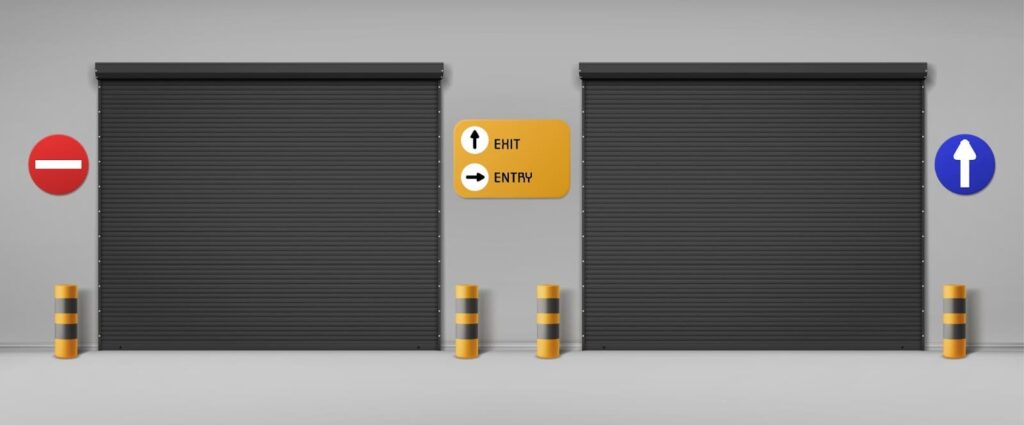
Why You Need to Know How to Open a Garage Door Manually?
It’s easy to overlook the importance of knowing how to manually open garage door, especially if you’ve never faced a situation where it’s required. However, several reasons make this knowledge invaluable:
- Power outages happen. Power outages are unpredictable and can occur during extreme weather conditions or due to technical failures. When you need to leave or enter your home during a blackout, knowing how to open garage door without power ensures you won’t be stranded.
- Mechanical failures. Garage door openers, like any other mechanical system, can sometimes fail. When this happens, the ability to manually operate your garage door provides a quick solution, preventing inconvenience and potential safety issues.
- Emergency situations. In emergency situations, such as fires or earthquakes, quick access to your garage or escape through it might be necessary.
It will be good if you never need a manual garage door release, but you should be prepared for unforeseen situations.
How to Open Garage Door Without Power
When the power goes out, you’ll need to disengage your garage opener from the door itself. The key to this is the emergency release cord, which can be your lifesaver. Here’s how you can use manual garage door opener:
- Locate the red emergency release cord hanging from the opener’s rail.
- Gently pull the cord down and away from the door. This action disengages the door from the opener, allowing you to move it manually.
- Slowly and carefully lift the garage door using the handle on the bottom panel. Ensure that it’s well-balanced and moves smoothly.
- If your garage door is equipped with a manual lock, secure it in the open position to prevent accidents and unauthorized access.
Opening a garage door without power is not difficult if you understand how the system works and how to use the tools correctly.
Safety First: Key Precautions When Manually Opening Your Garage Door
While knowing how to manually open your garage door is essential, it’s equally important to prioritize safety. Here are some key precautions to keep in mind:
- no obstructions in the door’s path before attempting to open it;
- keep children and pets away from the unit when you doing garage manual open;
- disconnect the power source to prevent accidental activation of the automatic opener.
- never attempt to manually open the door if it’s too heavy or unbalanced.
You should first of all take care of safety, make sure that neither you nor your loved ones are harmed while you open the door.
Screw Drive Opener System
If your garage door uses a screw drive opener system, you’ll need to follow these specific steps to manually open it:
- Locate the emergency release rope and handle.
- Pull the rope to release the trolley from the screw drive.
- Carefully lift the door, ensuring it’s well-balanced.
- Secure them in the open position using the supplied locking mechanism, if available.
Garage door emergency release can be very useful, but it should only be used in extreme cases.
Chain or Belt Drive Opener System
For garage doors with a chain or belt drive opener system, the process is slightly different. You need find the emergency release rope and handle. After that you need pull the rope, releasing the door from the chain or belt drive. Next, carefully lift the door slowly, ensuring it’s balanced. In the end you can lock the door (if a manual locking mechanism is present, secure the door in the open position).
Maintenance: Keeping Your Manual Garage Door Opener Ready
To ensure your manual garage door opening system is always in good working condition, follow these maintenance tips:
- Regularly inspect the emergency release cord for any damage or wear and tear.
- Lubricate moving parts, like hinges, rollers, and tracks, to prevent rust and ensure smooth operation.
- Check the balance of garage door periodically to make manual operation easier.
- Ensure that your manual lock, if available, is functional and engages properly.
By following these guidelines and being prepared to manually operate your garage door when needed, you’ll be well-equipped to handle any situation that arises, ensuring your safety and convenience.
Common Garage Door Cable Problems: Signs and Solutions
If you’re a homeowner, you probably use your garage door multiple times a day without giving it much thought. However, when your garage door cable encounters problems, it can quickly become a frustrating issue. In this article, we’ll explore the common garage door cable problems, identify the signs to look out for and provide practical solutions to get your garage door functioning smoothly once again.
Signs of Trouble

Before we dive into the solutions, let’s identify the signs that may suggest you have a garage door cable issue:
- Uneven Movement: If your garage door moves unevenly or jerks while opening or closing, it’s a red flag that something is amiss.
- Cable Fraying: Take a close look at the cables. If you notice any fraying or visible damage, this is a clear indication that your lines need attention.
- Excessive Slack: Garage door cables should have a specific amount of tension. If you notice excessive slack or they appear loose, it’s a sign of a problem.
- Unusual Noises: Pay attention to any grinding or squeaking noises when you operate the door. These noises could be a sign of issues.
- Stuck Door: If your garage door refuses to open or close, it’s likely due to a problem with the cables.
Common Causes of Garage Door Cable Problems
Understanding what causes these cable issues can help you prevent them in the future:
- Normal Wear and Tear: Over time, the cables naturally wear out due to the constant up-and-down movement of the garage door.
- Rust and Corrosion: Exposure to moisture and humidity can lead to cable corrosion, weakening their structural integrity.
- Improper Installation: If the cables weren’t installed correctly in the first place, they may wear out prematurely.
- High Tension: Excessive tension in the cables, often caused by problems with the springs, can lead to cable damage.
DIY Inspection: How to Check for Cable Damage
You can perform a simple visual inspection to check for cable issues. Here’s how:
- Ensure the garage door is fully closed.
- Examine the cables for any signs of fraying, kinks, or visible damage.
- Check the alignment of the cables on the drums.
- Verify that they are properly secured to the bottom bracket.
DIY Repair: Replacing a Broken Cable
If you’re comfortable with DIY garage door maintenance and have the necessary tools, you can replace a broken cable yourself. However, please note that this is not recommended for everyone, as it can be dangerous. Steps for replacement include:
- Release tension from the springs to prevent accidents.
- Remove the old, damaged cable.
- Install the new following the manufacturer’s instructions.
- Carefully reapply tension to the springs, ensuring proper alignment.
Preventive Maintenance Tips
To avoid problems, consider implementing these preventive measures:
- Regularly lubricate the cables and other moving parts to reduce friction.
- Keep them clean and free of debris, as dirt and grime can accelerate wear and tear.
- Schedule professional inspections and maintenance at least once a year to catch potential issues early.
When to Call a Professional
If you’re not confident that you can make the repair with your own hands, or if the problem is complex, it’s best to call a professional garage door technician. They have the experience and tools to diagnose and safely fix problems.
Safety Precautions
When working with garage door cables or any other components, safety should be your top priority:
- Disconnect the power supply before starting work.
- Use protective equipment such as safety goggles and gloves.
- When in doubt, consult a professional rather than attempting risky repairs on your own.
In conclusion, garage door cable problems are a common issue, but with vigilance and regular maintenance, you can prevent many of these issues from occurring in the first place. Remember to prioritize safety and consult a professional when needed to ensure the longevity and proper functioning of your garage door.
FAQs

1. What are common signs of garage door cable problems?
Signs of garage door cable problems include frayed or worn cables, uneven movement of the door, and a door that gets stuck during operation.
2. How can I visually inspect my garage door cables for issues?
Conduct a visual inspection by looking for any visible damage such as fraying, kinks, or rust on the cables. Also, check for alignment issues and ensure the cables are properly secured.
3. Can I replace garage door cables myself?
While it’s possible, it’s recommended to hire a professional for garage door cable replacement due to the potential dangers and complexity involved.
4. What causes garage door cables to fray?
Garage door cables can fray due to wear and tear over time, improper installation, lack of regular maintenance, or exposure to harsh weather conditions.
5. How often should I schedule maintenance for my garage door cables?
It’s advisable to schedule maintenance at least once a year to check for any potential issues, lubricate moving parts, and ensure the overall smooth operation of your garage door.
Garage Door Safety Sensors: Understanding Their Role and Importance
Garage doors are an integral part of our homes, providing convenience, security, and protection for our vehicles and belongings. While they offer numerous benefits, garage doors can also pose safety risks if not properly maintained and equipped with the necessary safety features. Among these features, garage door safety sensors play a crucial role in preventing accidents and ensuring the safety of everyone in and around the garage.
How Do Garage Door Safety Sensors Work?
Garage door safety sensors operate using various technologies, but their primary function is to detect obstacles in the path of a closing door. These sensors send signals to the garage door opener, instructing it to stop or reverse if an obstruction is detected.
The Importance of Garage Door Safety Sensors
Preventing Accidents: The primary purpose of sensors is to prevent accidents and injuries. They are particularly crucial in homes with children, as young kids may not always be aware of the dangers posed by a closing door. By automatically stopping or reversing the door’s motion when an obstruction is detected, safety sensors serve as a vital safeguard.
- Protecting Pets: Our furry friends can also be at risk when garage doors are closing. Safety sensors ensure that even small pets are detected and the door reverses before harm can occur.
- Avoiding Property Damage: Garage doors can be expensive to repair or replace, and they can cause significant damage to vehicles or other belongings if they close on them. Safety sensors prevent costly accidents by halting the door’s movement if an object is in the way.
- Enhancing Home Security: The safety sensor on garage door not only protects against accidents but also contributes to home security. If a garage door closes and encounters an obstacle, it could potentially compromise the security of your home. By ensuring that the door does not close on an obstruction, safety sensors maintain the integrity of your garage’s security.
Compliance with Safety Regulations: Many building codes and safety regulations require the installation of garage door safety sensors. Ensuring your garage door system meets these standards is not only a legal requirement but also a responsible choice for the safety of your family and visitors.
Maintenance and Troubleshooting
To ensure the effectiveness of your sensors, regular maintenance is essential. Here are some tips for maintaining and troubleshooting these safety devices:
- Keep Sensors Clean: Dust, dirt, and debris can accumulate on the sensor lenses, affecting their performance. Regularly clean the sensor lenses with a soft cloth to ensure they work correctly.
- Check Alignment: Ensure that the sensors are properly aligned.. If they are misaligned, they may not detect obstructions accurately. Adjust their position and alignment if necessary.
- Test the Sensors: Periodically test the sensors by placing an object in their path while the garage door is closing. If an obstacle is detected, the gate must immediately deploy. If it doesn’t, seek professional assistance to repair or replace the sensors.
- Inspect Wiring: Examine the wiring connecting the sensors to the garage door opener for any signs of damage. Damaged wiring can lead to sensor malfunctions and should be repaired promptly.
- Replace Batteries: If your sensors are battery-powered, replace the batteries regularly to ensure they have a consistent power supply.
- Professional Maintenance: Consider scheduling regular professional maintenance for your garage door system. A technician can inspect and service the sensors, ensuring they are in optimal working condition.
Garage door safety sensors are a vital component of any modern garage door system. Their role in preventing accidents, protecting your family, pets, and property, and enhancing home security cannot be overstated. Regular maintenance and attention to their proper functioning are essential to ensure their continued effectiveness.
Garage Door Color Trends: The Latest Shades
In today’s world, garage doors have evolved far beyond their basic function of providing security and accessibility to your garage. They have become a crucial part of a home’s curb appeal and aesthetics. Just like interior and exterior paint colors, garage door colors play a significant role in enhancing the overall look of your property. So, what are the latest garage door color trends that can elevate the appearance of your home? In this article, we will explore the most popular shades that are making waves in the world of garage door design.
Classic White: A Timeless Choice
When it comes to garage door colors, white has always been a classic choice. It never goes out of style and complements almost any architectural design. A white garage door gives your home a clean, timeless look, making it a popular choice among homeowners.
Elegant Black: A Bold Statement
Black garage doors are all the rage these days. They exude elegance and sophistication, making a bold statement that catches the eye. Pair a black garage door with the right exterior accents, and you’ll have a modern, chic look that stands out.
Cool Gray: A Contemporary Twist
Gray is a versatile color that can convey a sense of modernity and neutrality. It’s an excellent choice for homeowners looking to add a contemporary touch to their homes. Light gray or dark gray, the choice is yours, but both options can make your home look stylish and trendy.
Earthy Tones: Nature-Inspired Hues
Bringing the natural world into your garage door color choice is a trend that’s gaining momentum. Earthy tones like moss green, warm brown, or deep terracotta can give your home a cozy and inviting feel, connecting it to nature.
Vibrant Blue: A Pop of Color
For those who want to make a statement and add a pop of color to their homes, vibrant blue garage doors are a fantastic choice. Blue represents serenity and tranquility, making it an unexpected yet captivating option.
Woodgrain Finishes: Rustic Charm
If you love the rustic charm of wooden garage doors but prefer the durability of steel or aluminum, woodgrain finishes are the solution. These finishes mimic the look of real wood, offering a warm and inviting aesthetic without the maintenance.
Custom Colors: Personalize Your Style
Don’t be afraid to get creative and customize your garage door color. Many manufacturers offer custom color options, allowing you to match your garage door to your exact preferences and the existing color scheme of your home.
Matte Finishes: A Sleek Look
Matte finishes have gained popularity for their sleek and elegant appearance. They reduce glare and provide a soft, smooth texture, making your garage door look sophisticated and refined.
Two-Tone Designs: Adding Depth
For a unique and visually appealing look, consider a two-tone garage door. Combining two complementary colors or materials can add depth and dimension to your home’s exterior.
High-Gloss: Shine Bright
High-gloss garage doors reflect light beautifully, creating a stunning visual effect. They can make your home look luxurious and draw attention to its architectural details.
Contemporary Glass Panels: Modern Elegance
Garage doors with contemporary glass panels are a popular choice for those seeking a modern and elegant look. These doors allow natural light to filter into your garage while maintaining a sleek appearance.
Energy-Efficient Coatings: Sustainability Meets Style
As sustainability becomes a more significant concern, garage door manufacturers are offering energy-efficient coatings that help regulate temperature and reduce energy consumption. These coatings can be paired with various color options to enhance both style and efficiency.
Low-Maintenance Colors: Convenience Matters
Opt for low-maintenance color options that resist fading and require minimal upkeep. This ensures that your garage door will look great for years to come with minimal effort.
Bold Accents: A Dash of Personality
Consider adding bold accents to your garage door, such as decorative hardware or contrasting trim. These small details can add personality and character to your home’s exterior.
Coastal Colors: Beachy Vibes
For homes near the coast or those aiming for a beachy vibe, coastal colors like aqua, turquoise, and seafoam green are excellent choices. They evoke the tranquility of the ocean and create a relaxed atmosphere.
In conclusion, selecting the right color for your garage door can significantly impact your home’s overall aesthetics. Whether you prefer the timeless elegance of white, the boldness of black, or the contemporary appeal of gray, there’s a most popular garage door colors to suit every taste and style. Explore these options, consider your home’s architecture, and let your garage door make a statement that reflects your personality and enhances your property’s curb appeal.
Fixing Garage Door Track Misalignment: DIY or Professional Service?
Garage doors are an essential part of our homes, providing security and convenience. However, over time, they can experience issues, and one common problem is track misalignment. When your garage door tracks are not aligned correctly, it can lead to several issues, including difficulty in opening and closing the door, strange noises, and even safety concerns.
Understanding the Garage Door Track System
Before we get into the repair options, let’s first understand how the garage door track system works. Conventional garage doors operate on guides that move up and down the door panels. These guides are very important for the smooth and efficient operation.
Signs of Malfunction
To determine if your garage door tracks are misaligned, look out for these signs:
- Uneven Gaps: Check if there are uneven gaps between the door and the tracks on either side.
- Noisy Operation: Misaligned tracks often result in a noisy operation when opening or closing.
- Jerky Movements: If your garage door jerks or gets stuck during operation, it might be due to track misalignment.
DIY Garage Door Track Alignment
If you’re a handy homeowner and enjoy tackling DIY projects, you might be tempted to fix track misalignment yourself. Here’s how you can attempt it:
Tools and Materials Needed
Before you start, gather the following tools and materials:
- Wrenches
- Pliers
- Level
- Lubricant
- Safety goggles
- Gloves
Step-by-Step Guide
- Safety First: Always prioritize safety. Wear safety goggles and gloves to protect yourself.
- Inspect: Carefully inspect the tracks for bends or dents. If you find any, use pliers to straighten them.
- Tighten the Bolts: Check the bolts and brackets holding the tracks in place. Use wrenches to tighten any loose bolts.
- Level the Tracks: Use a level to ensure that the tracks are perfectly aligned horizontally. Adjust them as needed.
- Lubrication: Apply lubricant to the tracks to reduce friction, allowing for smoother operation.
- Test the Door: Open and close them several times to make sure they move smoothly along the guides.
When to Call a Professional
While DIY garage door track alignment can work for minor issues, there are situations where calling a professional service is the best course of action:
- Complex Misalignment. If your tracks are severely misaligned or damaged, it’s best to leave the repairs to professionals. Attempting to fix complex issues yourself may worsen the problem.
- Lack of Experience. If you are not confident in your abilities or have no experience in this field, it is better to hire a professional who can effectively handle this task.
- Warranty Concerns. If your garage door is still under warranty, attempting DIY repairs might void the warranty. Hiring a professional ensures that any repairs are in compliance with the warranty terms.
Conclusion
Fixing garage door track misalignment is crucial for the proper functioning and safety of your garage door. While some minor misalignments can be addressed through DIY methods, it’s essential to know your limitations. For complex issues, lack of experience, or concerns about your warranty, it’s wise to enlist the help of a professional garage door repair service.
Remember, safety should always come first when working on your garage door. If you’re unsure about any aspect of the repair process, it’s better to seek professional assistance.

